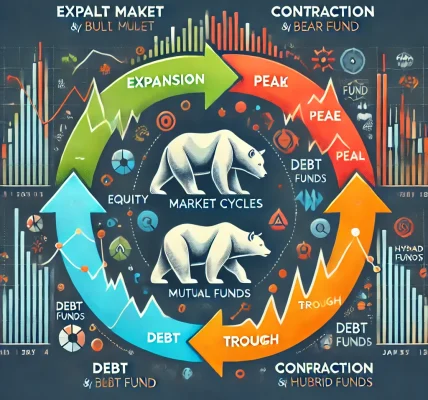ntroduction
If you have ever invested in mutual funds or considered doing so, you may have come across the term Net Asset Value (NAV). Understanding how NAV works is crucial for making informed investment decisions.
In this guide, we will explain what NAV is, how it is calculated, factors affecting it, and its significance in mutual fund investing.
What is Net Asset Value (NAV)?
Net Asset Value (NAV) is the per-unit price of a mutual fund. It represents the market value of a mutual fund’s assets minus its liabilities, divided by the number of outstanding units.
Formula for NAV Calculation
Where:
- Total Assets = Value of all securities (stocks, bonds, etc.) held in the fund + cash reserves
- Total Liabilities = Expenses, management fees, and other liabilities
- Total Outstanding Units = The total number of units held by investors
NAV is calculated at the end of each trading day after the market closes, ensuring that investors receive the correct value for their investments.
Factors That Influence NAV
Several factors affect the NAV of a mutual fund, including:
- Market Performance – If the securities in the fund appreciate in value, the NAV increases. Conversely, if they decline, NAV decreases.
- New Investments – When investors buy new units, the total assets increase, but the NAV remains unaffected as units are issued at the current NAV.
- Redemptions – If investors redeem units, the total assets decrease, impacting NAV.
- Dividends and Interest – Any income earned from the underlying securities, such as dividends from stocks or interest from bonds, affects the NAV.
- Fund Expenses – Expense ratios, including fund management fees, administration costs, and other charges, reduce NAV.
Why is NAV Important for Investors?
NAV is a crucial metric in mutual fund investing, but its significance depends on the type of fund and investment goals.
1. NAV and Mutual Fund Performance
Many investors mistakenly believe that a lower NAV means a cheaper fund. However, NAV does not determine future returns. The performance of a mutual fund depends on the growth of its underlying assets, not just its NAV.
2. Buying and Selling Mutual Fund Units
- When you invest in a mutual fund, you buy units at the fund’s current NAV.
- When you redeem your investment, you sell the units at the prevailing NAV.
3. NAV and Fund Growth
If a fund’s NAV increases over time, it means the fund’s underlying securities have gained value, leading to capital appreciation for investors.
NAV vs. Market Price: Understanding the Difference
- Mutual Fund NAV – Reflects the fair value of assets per unit, calculated once a day.
- Stock Market Price – Stocks trade at market-determined prices that fluctuate throughout the day.
- ETF NAV vs. Market Price – Exchange-Traded Funds (ETFs) have a NAV, but their market price may differ due to demand and supply factors.
How to Use NAV in Investment Decisions?
1. Comparing Similar Funds
Rather than focusing on NAV alone, compare funds based on historical performance, expense ratio, and risk-adjusted returns.
2. Systematic Investment Plan (SIP) and NAV
In a SIP investment, NAV determines how many units you receive for each contribution. When the NAV is lower, you buy more units; when it is higher, you buy fewer units, following the principle of rupee-cost averaging.
3. Selecting Growth vs. Dividend Funds
- Growth Funds: NAV increases as profits are reinvested.
- Dividend Funds: NAV reduces when dividends are paid out.
Common Myths About NAV
- Myth: A lower NAV means a better investment.
- Truth: NAV only indicates the per-unit price and has no bearing on future returns.
- Myth: A higher NAV means the fund is expensive.
- Truth: A fund’s value depends on the growth of its assets, not just the NAV.
- Myth: NAV alone determines mutual fund performance.
- Truth: Other factors like portfolio composition, fund management, and market conditions influence performance.
Conclusion
Understanding how NAV works can help investors make informed decisions when investing in mutual funds. While NAV is an important metric, it should be considered alongside expense ratios, fund objectives, and risk factors.
If you are new to mutual funds, consult a financial advisor before investing to align your choices with your financial goals.
Happy Investing!




